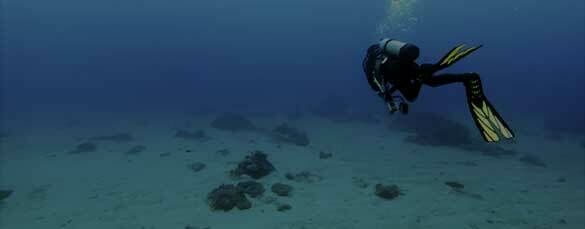Diabetes mellitus (Recreational Diving Guidance)
A diver with diabetes mellitus may have a hypoglycaemic attack while in the water, which may be fatal to himself or to his diving partner. The hypoglycaemic attack may be brought on by poor control of the diabetic condition or by an increase in physiological stress due to exercise, cold, etc.
The UKDMC has decided that diabetics may be allowed to dive provided that they are able to pass the standard medical examination and in addition, satisfy the following criteria and those in the article “Diving with Diabetes”:
1. The diabetic has not experienced any hypoglycaemic attack within the last year.
2. The diabetic has not been hospitalised for any reason connected with diabetes in the last year.
3. The diver needs to complete Diabetes forms A and B, also found under “Downloads” on this website, including presenting the form to their treating physician to have the second part completed (but see point 4 below).
4. The physician in charge of the diabetic at the diabetic clinic must consider the level of control to be satisfactory. This implies that the long-term control of the diabetic condition must be good. A guide to this may be obtained from the HbA1c (should be less than 70 mmol/mol). Ideally the treating physician should indicate if there are any other clinical issues they feel the diving physician should be aware of. Sometimes it is the case that the treating physician refuses to complete this form. If so the diver still needs to complete their section of the Diabetes form and bring copies from the notes of the medical summary (to attempt to address questions 3, 4, 9, 10 and 11) along with the diver’s own declaration and copies of their medication list, latest HbA1c result, latest urine microalbumin result and latest retinopathy screen result.
5. There must be no microalbuminuria present. Any degree of retinopathy beyond background retinopathy is not allowed. There must be no evidence of neuropathy (sensory, motor or autonomic), nor of vascular or microvascular disease beyond the background retinopathy in the eye.
6. Body Mass Index (BMI) should ideally be below 29.9 but must not be more than 34.9. To calculate BMI go to BMI www.nhs.uk and put BMI in the search box at the top right of the page. Where the BMI is borderline the Medical Referee needs to consider a waist measurement in men of greater than 105cms and in women of greater than 90cms is a cause for concern and they should use their clinical judgment taking other factors into account.
7. The physician performing the medical examination should be satisfied that the diver has a good knowledge of the risks being undertaken when diving, which are due to the diver’s diabetic condition.
8. Divers under the age of 18 with diabetes are less likely to meet the above criteria so are more likely to fail or are more likely be restricted to pool diving with close supervision. The reason for this is that during adolescence, insulin requirements may vary within short periods of time due to the glucose demands of the body. Such changes are difficult to take into account when diving and the risks of hypoglycaemia in the water are high. By the age of 18, most growth has occurred and the doses of insulin required are more stable so these restrictions are less likely to be required.
9. Please note all diabetics require an annual medical undertaken by a UK Diving Medical Referee who reviews and signs the last page of Forms A and B as described below.
The potential diabetic diver should obtain Forms A and B. Form A must be filled in by the diver on an annual basis. Form B should be filled in by the physician in charge of the diabetic diver and the Diving Medical Referee and this too, must be done annually. A copy of both forms should be made and returned to Dr C.J. Edge, The Stone Barn, Gravel Lane, Drayton, Abingdon, Oxon OX14 4HY.
Download Diabetes Forms A and B
Download Diving with Diabetes article
Reviewed 19 February 2023



